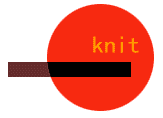
|
|
|
page
1
|
selected information |
|
The story of Knitting in Japan Part 2
The Meiji Period and until the end of the First World War |
As a Japanese knitter who lives mainly outside Japan I often get asked questions like: ..is there a history of knitting in Japan? In this series of articles, of which this is Part Two, I will attempt to answer these questions. Part One of this series covered the first contacts with knitting in Japan, up to the end of the ‘Edo’ period in 1867, and thois follows on taking us up to the end of the First World War |
|||||
|
The Meiji Period - Revolution by Decree The Meiji Period marked the beginning of Japan's entry into the modern world and the beginning of industrialisation. After over 200 years of stability what was it that turned the Tokagawa Shogun dynasty upside down? The ruling elite was galvanised by the very real fear that Japan didn't have the technology to resist invasion by a more industrially advanced colonial power, and they set out on an unprecedented drive to modernise all aspects of society. The transformation they set in train was astonishing in its scope and ambition. Feudal leaders from Western Japan joined together to overthrow the Shogunate and restore the Emperor as head of government. The 'restoration' of the Emperor led to a renewed fascination with imperial traditions and Shintoism. The samurai, once the bulwark that sustained the Shoguns in power, were a spent force, not even allowed to wear their swords in public. A parliament was introduced, the government instigated a modernisation program for industry., and trade with outside countries flourished, increasing by 1000% by 1913. All of this brought an influx of foreign ways into Japan, and one of those 'foreign ways' was knitting. The Missionary Schools |
||||||
|
|
It is striking how the development of knitting in Japan mirrors wider social changes, and especially changes in the role of women. The missionary schools spread rapidly following the establishment of religious freedom in 1873, and they were to exert a great influence on the subsequent development of the nature of women's education in Japan. Between 1870 & 1875 women's missionary colleges were established at Yokohama, Tokyo (newly established as the capital), Kobe, Kyoto and Osaka. The basic curriculum of these colleges covered, amongst other things, English Language, Western Culture, Christianity, Art and the Handicrafts (dress making, embroidery and knitting). We can find, for instance, that in 1871 knitting and embroidery were already part of the curriculum at a women's school in Yokohama, founded by an American, Ms Hevon.
|
Around the same time Japanese women began to travel overseas to study abroad or as ambassadorial wives and some of these would eventually return and also establish universities for women. Universal education was a primary objective of the Meiji government, and by the end of the period in 1912 they had made rapid progress at all levels. Teachers from Holland, Germany and England were imported to help kick-start the system. Handicrafts, including dress-making and sometimes knitting, where often part of the curriculum, even at Primary Schools. | ||||
 |
Kobe Women's College
(above), founded in 1873 by: Eliza Talcott and Julia_Dudley (left) |
|||||
| >> page 2 | ||||||